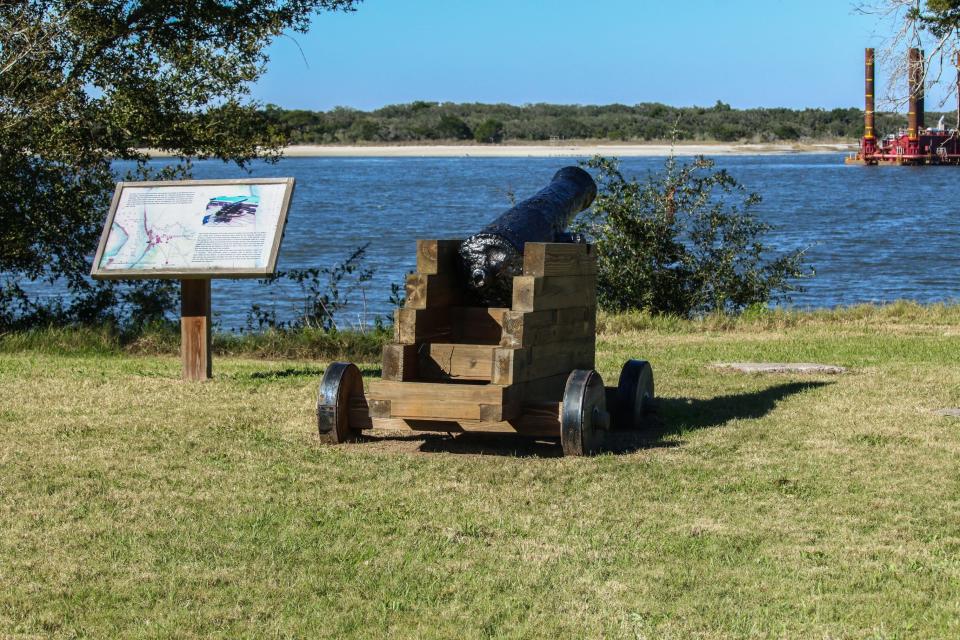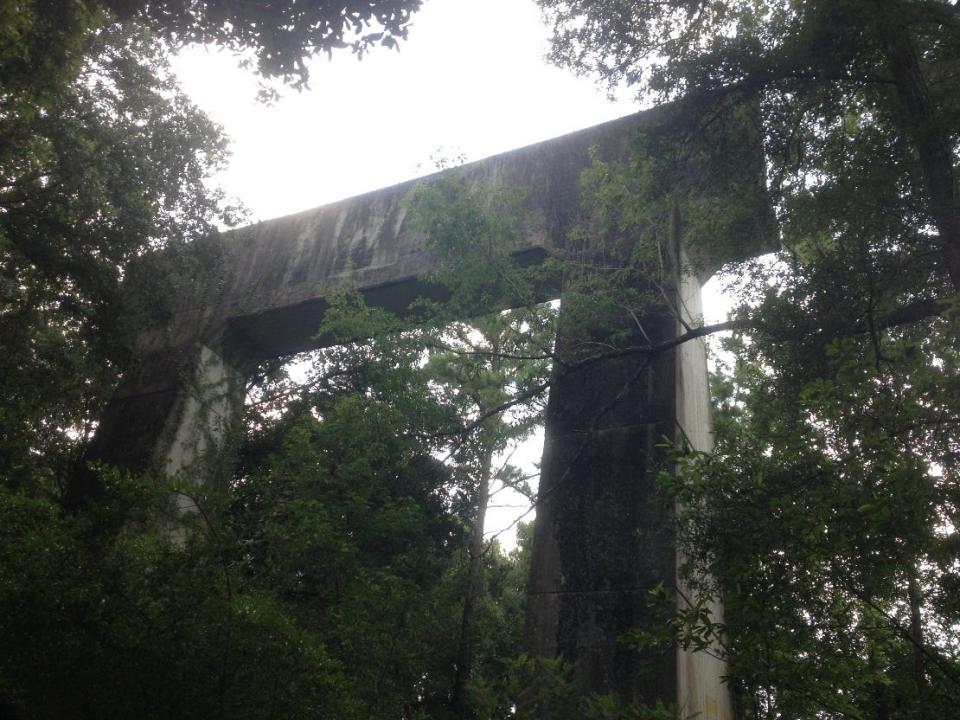Florida's not-so-ancient ruins: Spanish outposts, citrus packing houses and more
If you visit Pompeii, you can see a 2,000-year-old honky-tonk. The Roman city in southern Italy was preserved by a disaster we don't experience too often in Florida. Our hurricanes and wildfires destroy, but they don't bury the remains for the benefit of antiquarians and tour guides.
All Floridians can expect is that asphalt and concrete may cover some of our civilization, to be discovered by archaeologists of future millennia and classified as Old Plastic Culture, considered a sad and primitive time even by researchers trained to be non-judgmental.
Florida is a land of the eternal present. Every generation moves here, looks around and decides to remake Florida in its own image. Granted, Florida is a new place overall, with less physical heritage than Assyria or Massachusetts. But that's more reason to care for what past we have.
More from Michael Stephens:
If you place obscenities where kids can see them, you are not a conservative
Floridians are progress-obsessed, historically rootless and boundlessly optimistic
The distant clouds of chaos: Deceptive calm may give way to crisis
Colonial Florida got its start with the founding of St. Augustine in 1565. So did Florida's tourism industry, when Sir Francis Drake visited a few years later and burned it. There's nothing ruinous in St. Augustine. Everything has either been maintained all along, lovingly restored or reconstructed from the finest coquina money can buy.
That's far from the state of most other Spanish outposts across Florida. Fernandina's Fort San Carlos is lucky to have a historical marker noting the earthworks that have become mere undulations in the ground. Fort San Marcos de Apalache boasts stone walls still tall enough to delay an angry possum.

Florida's Spanish missions have typically been rediscovered through postholes and potsherds.
Northern Marion and southern and eastern Alachua County form what's remembered as the Old Citrus Belt. Citrus first became vital to Florida here, prospering until freezes drove the industry south after 1899. It's one of the few regions of Florida to ever know decline.
Hamlets like Island Grove, Citra, Cross Creek and McIntosh slumber on as living museums. Citrus packing houses stand like Greek temples, remarkably akin to them in both dimensions and dignity. Their wood and tin have grayed like stone. Look carefully and you may even see some scraggly orange trees still hanging on, survivors of groves sacred to the gods
Now we explore slightly lost cities and other curiosities of proto-modern Florida.
Opa-locka's over 100 Moorish Revival buildings give the South Florida town a medieval Baghdadi exoticism that would make Harun al-Rashid proud. One almost expects to see Sabu fly past on a carpet.
Opa-locka's faded 1920s charms are, well, part of its charm. People actually live here, rather than being a ticketed attraction. You can drive down Aladdin Street and Ali Baba Avenue in an air-conditioned comfort you'd seldom have at Disney.
At Santos, south of Ocala, U.S. 27/301/441 divides to form a wooded island of a few acres. Hidden here stand four huge concrete pylons intended to support a bridge over the Atlantic-Gulf Ship Canal. This giant ancestor of the Cross-Florida Barge Canal was fortunately halted in the 1930s.
Untouched by time, the mere thirty-foot pylons suggest Mayan ruins, while the sixty-footers could be relics of Atlantis. After every other human trace across Florida has crumbled, they may still stand, glories of a cancelled past.

On U.S. 41 north of Dunnellon, scrub forest gives way to a desolate field. Beyond sit eight round, domed buildings made all of brick, windowless and forlorn. In some older land they might be mistaken for the tombs of pagan kings. (Actually, they're disused charcoal kilns.)
I was about 6 when I first saw them. It was night, in a Florida far lonelier than today, and if you'd told me that Satan's demons live there, I would have believed it. Even recently, viewed on an afternoon of storm clouds and thunder, they seemed somehow involved in calling up the winds.
With the cult of the new and shiny enshrined as Florida's state religion, Florida's ruins are too often considered eyesores, spared only by the cost of removal. The wonder and mystery they lend to our plastic state is seldom appreciated.
Who knows what remains out there, unrecognized and unloved? Fine old houses falling down, overgrown graveyards with stones aslant, abandoned stretches of the first highways to bring tourists south in their Model Ts? We do know that once they're gone, Florida can never, ever get them back. Of course, we could always build some fiberglass replicas.
Michael Stephens lives in Gainesville.
Join the conversation
Share your opinions by sending a letter to the editor (up to 200 words) to letters@gainesville.com. Letters must include the writer's full name and city of residence. Additional guidelines for submitting letters and longer guest columns can be found at bit.ly/sunopinionguidelines.
Journalism matters. Your support matters.
Get a digital subscription to the Gainesville Sun. Includes must-see content on Gainesville.com and Gatorsports.com, breaking news and updates on all your devices, and access to the eEdition. Visit www.gainesville.com/subscribenow to sign up.
This article originally appeared on The Gainesville Sun: Michael Stephens: Examples of Florida 'ruins' from Citra to Opa-locka

